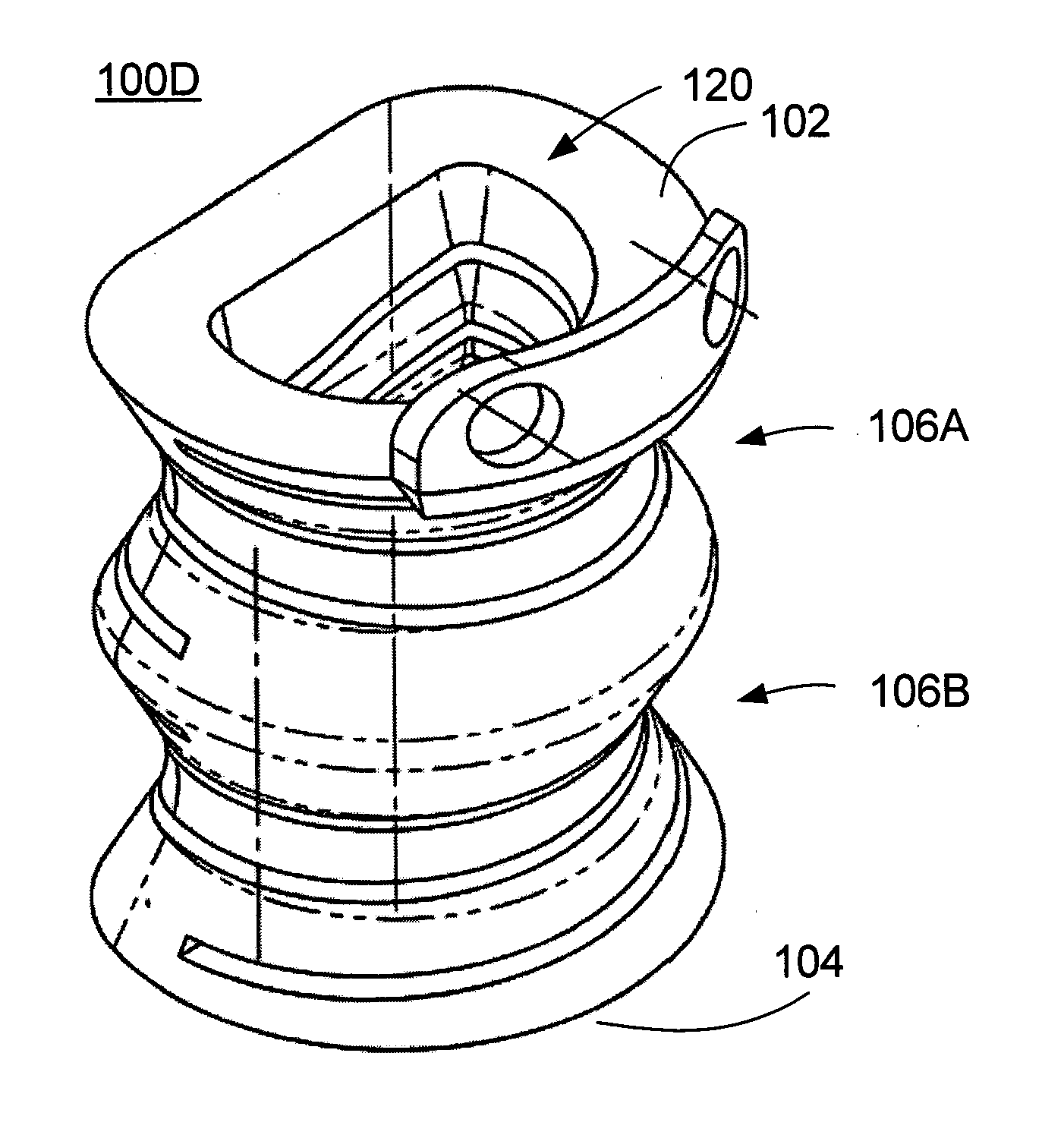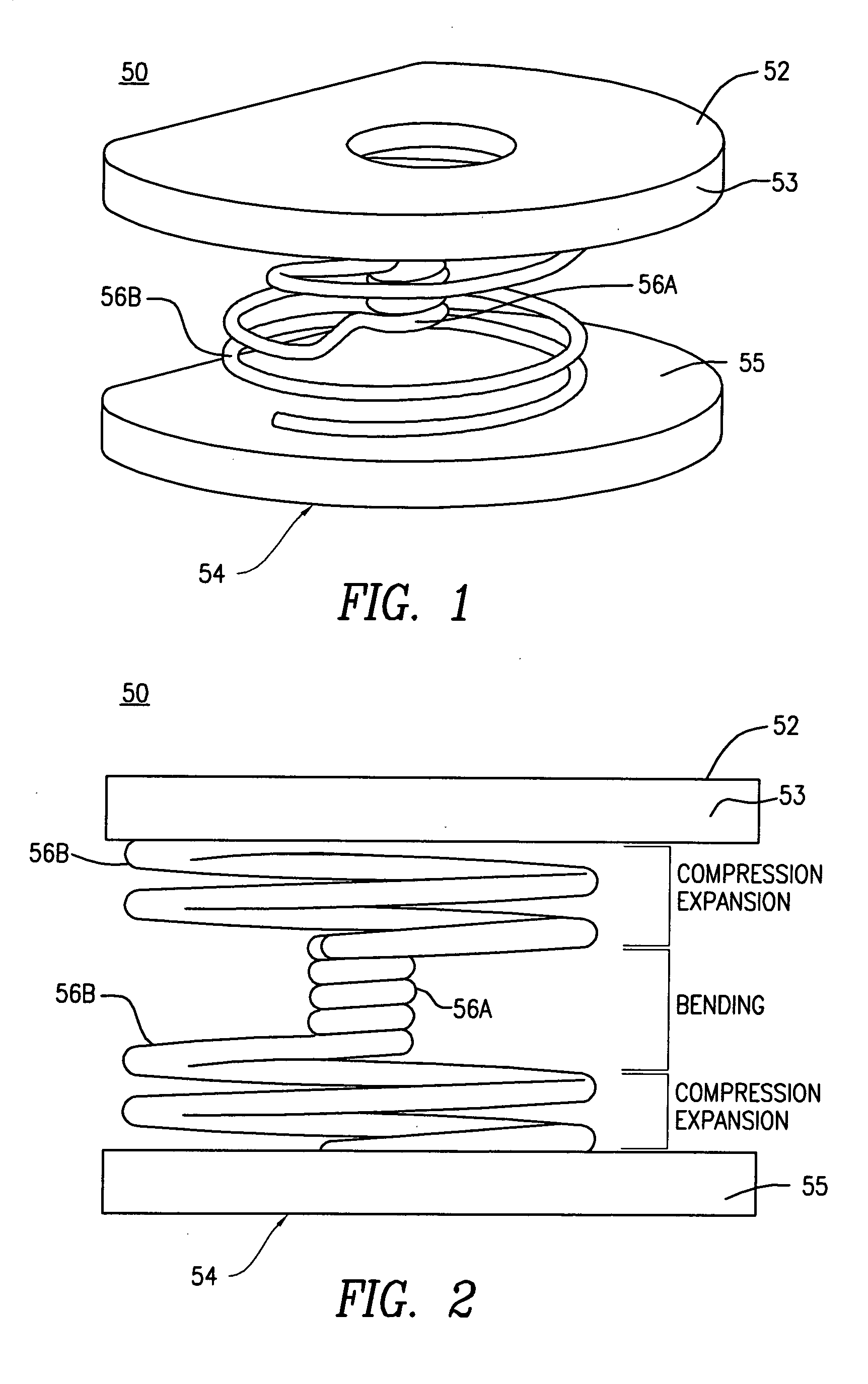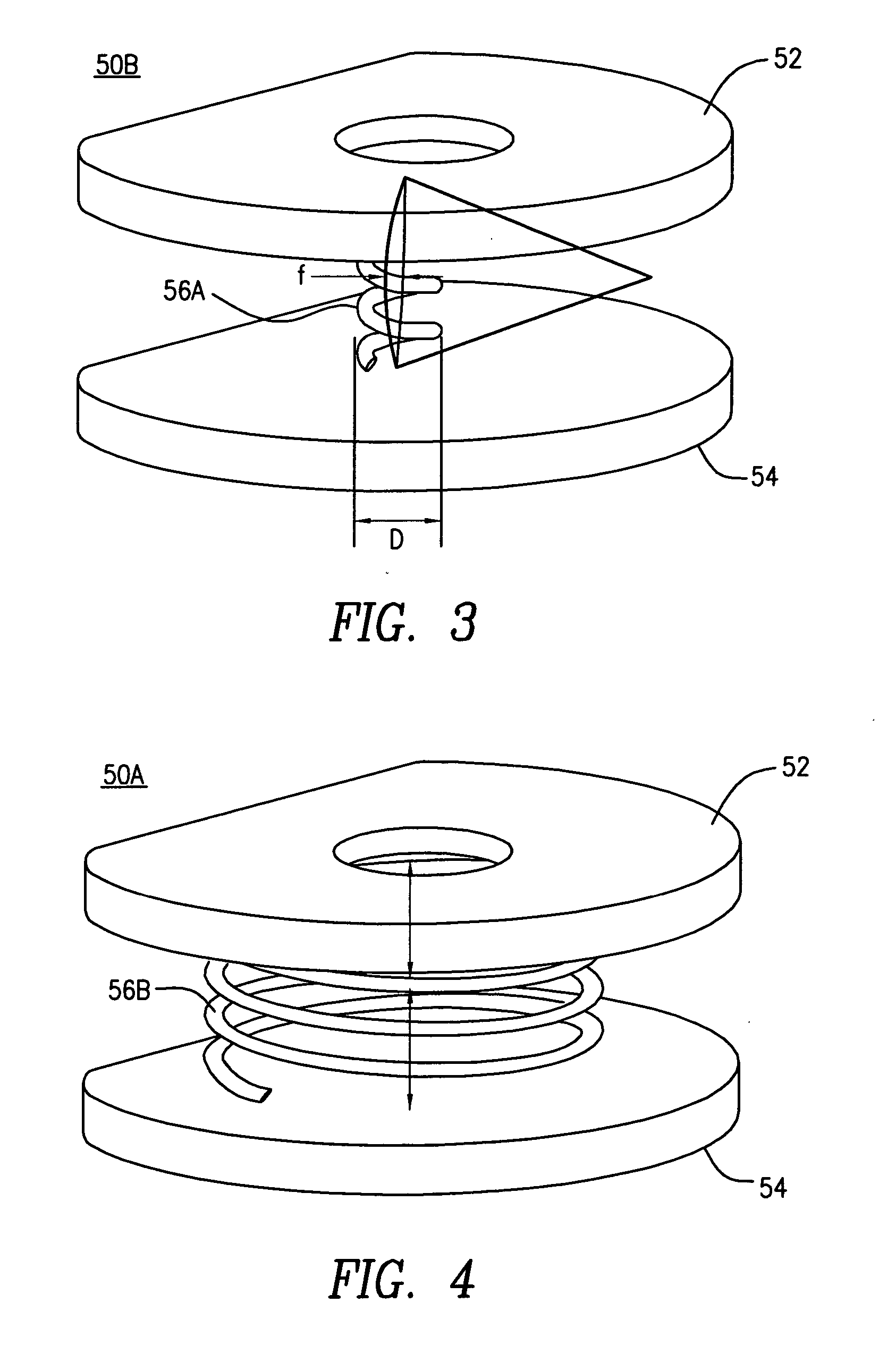Intervertebral stabilizer, methods of use, and instrumentation therefor
a stabilizer and intervertebral technology, applied in the field of spinal disorders, can solve the problems of reducing the usefulness of the stabilizer as a replacement option, affecting the natural stiffness of the intervertebral disc, and affecting the ability of the stabilizer to be used
- Summary
- Abstract
- Description
- Claims
- Application Information
AI Technical Summary
Problems solved by technology
Method used
Image
Examples
Embodiment Construction
[0035]FIGS. 1-2 illustrate an embodiment of a spinal intervertebral stabilizer 50 in accordance with one or more aspects of the present invention. The stabilizer 50 is sized and shaped to fit in the intervertebral space between adjacent vertebral bones of the spine. It is understood that the size and shape of the stabilizer 50 may be adapted to fit in an intervertebral space at any level of the spine, such as the cervical spine, thoracic spine, or lumbar spine. The stabilizer 50 is sized and shaped to be inserted into the inter-vertebral space from an anterior direction. The stabilizer 50 includes an upper surface 52 of a first member 53 and a lower surface 54 of a second member 55 that are operable to engage end plates of the respective vertebral bones. A spring element in the form of a helical coil 56 is interposed between the upper and lower surfaces 52, 54 of the first and second members 53, 55.
[0036] The helical coil 56 includes at least one first segment 56A having a first di...
PUM
 Login to View More
Login to View More Abstract
Description
Claims
Application Information
 Login to View More
Login to View More - R&D
- Intellectual Property
- Life Sciences
- Materials
- Tech Scout
- Unparalleled Data Quality
- Higher Quality Content
- 60% Fewer Hallucinations
Browse by: Latest US Patents, China's latest patents, Technical Efficacy Thesaurus, Application Domain, Technology Topic, Popular Technical Reports.
© 2025 PatSnap. All rights reserved.Legal|Privacy policy|Modern Slavery Act Transparency Statement|Sitemap|About US| Contact US: help@patsnap.com



